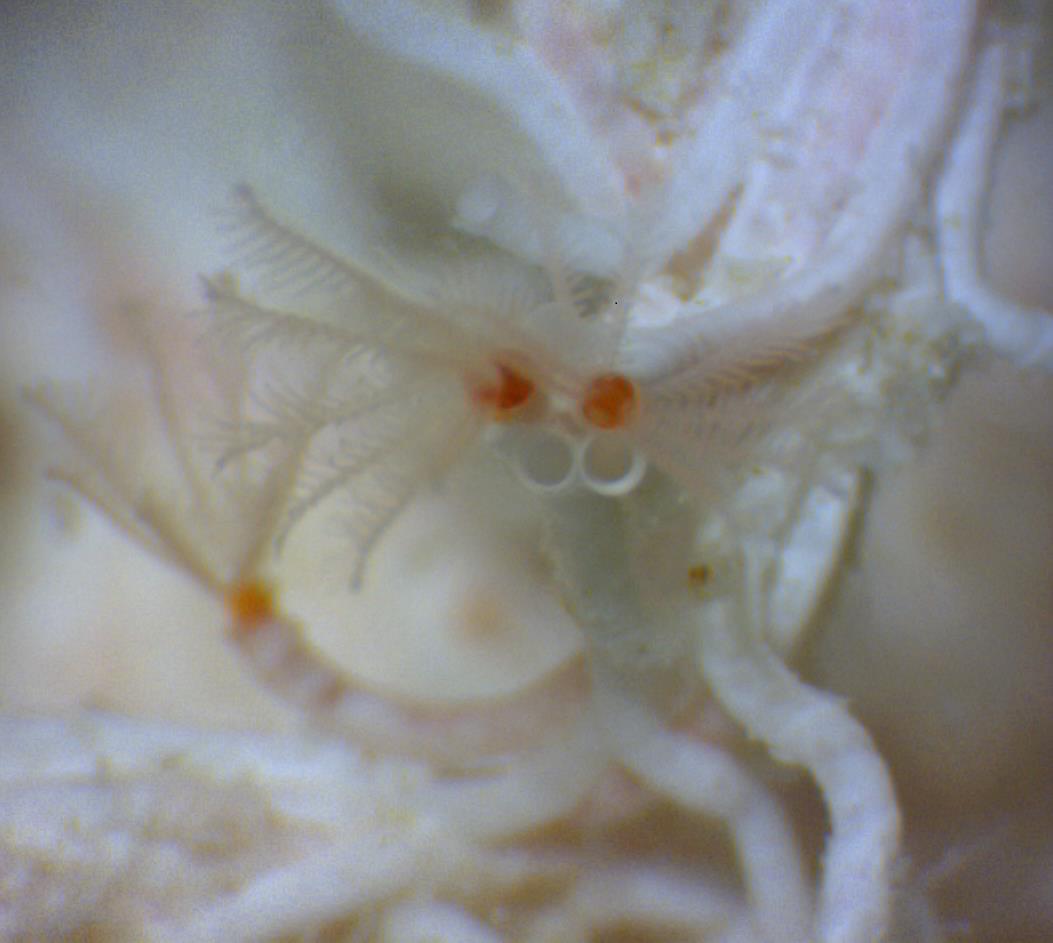MICRO-HABITATS AND ASSOCIATIONS

Dense aggregations of Filograna implexa provide a complex microhabitat promoting high species richness and biodiveristy of small marine organisms which are able to live between or on tubes.
Photo by Emma Blacklock
Due to such an elaborate architectural network of calcareous tubing it is no surprise that large aggregations of this species promote a diverse range of microhabitat (biogenic structure) for many other small marine species. Scientific research has demonstrated that the vast abundance of microhabitats made available by these particular species is possible due to the heterogeneous physical structure of these colonies. As colony growth increases this promotes the formation of new holes, crevices and surfaces for attachment of sessile and use by mobile organisms alike. In comparison to other biogenic structures these habitats are particularly species rich.
Spatial arrangement of colonies is thought to enable a deceleration of water to a more manageable velocity for optimal foraging which is explained by the abundance and diversity of filter feeders found in these environments. Both passive filter feeders; porifera, bryozoan and hydrozoan and active filter feeders; bivalves and some ascidians; which rely on musculature to actively pump water through body for feeding have been reportedly associated with these colonies. Along with this form of feeding behaviour, colonies also support a range of detritivores, scavengers and carnivores.
The rigid structure of this calcium carbonate network excludes many large predators such as fish, sea urchins and crabs allowing the highly abundant micro- community population. Hence, community structure is defined solely by micropredators such as gammarids and other carnivorous polychaetaes (Haanes and Gulliksen, 2011).

One of the many predatory crabs which these tube worm networks excludes from micro community
Photo by Tanya Pernase
|
|

Microhabitats formed by F.implex aggregation provide protection from large mobile predators such as fish on the reef.
Photo by Tanya Pernase
|
|